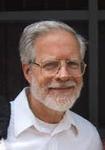Cited By
View all- Kim YLee CChoi JOh SPark SLaakso MMonga MSimon Sheard J(2023)Introduction to programming Using CleanProceedings of the 2023 Conference on Innovation and Technology in Computer Science Education V. 210.1145/3587103.3594176(655-655)Online publication date: 29-Jun-2023
- Gokhale A(2018)Measuring students' attitudes toward information technologyJournal of Computing Sciences in Colleges10.5555/3199572.319958633:4(101-102)Online publication date: 1-Apr-2018
- Hong GYao JMichael CPhillips L(2018)A multilingual and comparative approach to teaching introductory computer programmingJournal of Computing Sciences in Colleges10.5555/3199572.319957333:4(4-12)Online publication date: 1-Apr-2018
- Show More Cited By



